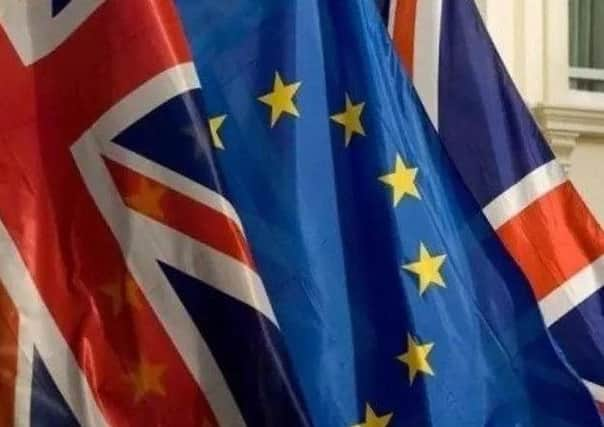Yorkshire businesses facing a Brexit '˜red tape bombshell' as Government sets out future trade plans


Publishing the two favoured options for a future customs arrangement with the EU, the Government has unveiled plans for a unique “mirroring” model that could remove the need for border checks even after the UK leaves the Customs Union.
Ministers claim the proposals will minimise post-Brexit trade barriers to industry, while freeing Britain up to strike new trade deals with other countries.
Advertisement
Hide AdAdvertisement
Hide AdHowever, opponents argue that both options are likely to involve additional paperwork for businesses – while mirroring would leave companies facing a complex two-tier tariff system.
“[Ministers] might promise frictionless trade, but they are offering a red tape bombshell for British business,” said Labour MP and Vote Leave Watch chairman, Chuka Umunna.
“Ministers effectively concede that Britain will need to stay in the Customs Union for transition. But... such a transition only moves the cliff edge for business from 2019 to 2021.
“If we leave the Customs Union, British firms will still face damaging disruption to their imports, exports and supply chains.
Advertisement
Hide AdAdvertisement
Hide Ad“To truly ensure frictionless trade between Britain and the European Union, the Government should negotiate to keep Britain in the Customs Union after Brexit.”
The Government published the customs proposals ahead of the second round of formal Brexit negotiations later this month.
The first approach – described as a “highly streamlined customs arrangement” – would see the UK and EU trading as third parties, while relying on technology and trade agreements to minimise customs delays.
This would allow the UK to set its own domestic customs rules. However, the Government admits it would mean “an increase in administration” for businesses, and would likely require the introduction of new IT systems and notification procedures at ports.
Advertisement
Hide AdAdvertisement
Hide AdThe second approach – the mirroring model – would see the UK continue to apply EU customs rules to external borders thereby removing the need for a EU-UK customs border. This would be accompanied by a separate system for products imported solely for domestic markets, for which the UK would be free to set its own, lower tariffs.
Officials have heralded this model as an “innovative” approach to achieving “frictionless” trade with the EU. But they also admit it is “untested, and would require a “robust enforcement mechanism” to ensure the correct tariffs are being applied.
The proposals were largely welcomed by industry yesterday, with the CBI describing them as a “critical first step forward”. Director general Josh Hardie said the additional clarity “is vital for businesses making long-term investment decisions today”.
The Associated British Ports – which manages ports in Hull, Goole and Grimsby – said it was “committed to working with Government to make sure trade can flow as smoothly as possible following the UK’s exit from the Customs Union”.
Advertisement
Hide AdAdvertisement
Hide AdWhile West and North Yorkshire Chamber of Commerce urged the Government to focus its resources “on the conclusion of a successful customs deal with the EU”.
However, the Brexit Select Committee chairman, Hilary Benn, argued the proposals – which also include plans for a “temporary customs union” with the EU – provided little certainty.
“Six months on from the Brexit white paper, UK businesses are today still no clearer about what will actually happen to our trade with the EU after March 2019,” he said. “We have no idea whether the EU will agree to the Government’s proposals and if they are rejected, then what?”
The Tory MP Anna Soubry, who co-chairs the all-party parliamentary group on EU relations, added: “Ministers appear to be moving in the right direction, but they need to go further.
Advertisement
Hide AdAdvertisement
Hide Ad“No new agreement with the EU can fully replace the benefits of customs union membership.”
The Department for Exiting the EU is also due to publish its latest negotiating position paper today, ahead of the next round of talks on August 28.
The document, which focuses on the issue of the border between Northern Ireland and the Republic, restates the Government’s intention to avoid any return to a physical border between the two nations. It includes a commitment to ensuring there is “no change” to the Common Travel Areas that allows for free travel between the UK and Ireland, while dismissing the idea of a customs border on the Irish Sea.
Commenting on the paper, a Government source said both sides “need to show flexibility and imagination” on the issue.